Montana is home to the elusive and powerful mountain lion. Once on the brink of being wiped out, these stealthy predators have made a remarkable comeback. Today, they roam the state’s vast, rugged landscapes, growing their numbers thanks to conservation efforts.
We will explore Montana’s mountain lions’ history and unique characteristics and how efforts to identify and manage them shape their future. From hunting licenses and quotas to the risks of trichinosis, we’ll discuss the complex relationship between humans and these wild cats.
- Related article: Discover Wildlife in Montana
Have you ever wondered how to watch mountain lions in their natural habitat safely? We’ll share tips on observing them, ensuring both your safety and theirs. This guide is for those who want to appreciate the beauty and importance of mountain lions in Montana’s ecosystem.
7 Key Takeaways on Montana’s Mountain Lions
- Mountain lions in Montana survived targeted elimination efforts and have rebounded due to conservation and research. This set an example for wildlife management.
- These large felines with vast hunting ranges play a crucial role in the state’s ecosystem by controlling deer, elk, and porcupine populations.
- Learning to distinguish between male and female lions is essential for conservation. It also ensures sustainable hunting practices.
- Montana manages mountain lions as a game species. Recently, Montana Fish, Wildlife, and Parks (FWP) have increased the hunting quotas for mountain lions nationwide.
- Handling and consuming mountain lion meat requires precautions, such as thorough cooking and testing for parasites.
- The best Montana mountain lion outfitters focusing on tradition and success rates include Montana Mountain Lion Adventures, Swan Mountain Outfitters, and Redbone Outfitting.
- Most of Montana’s land is suitable for mountain lions. As a result, tips for spotting these elusive creatures include not venturing alone when hiking.
About Montana Mountain Lions
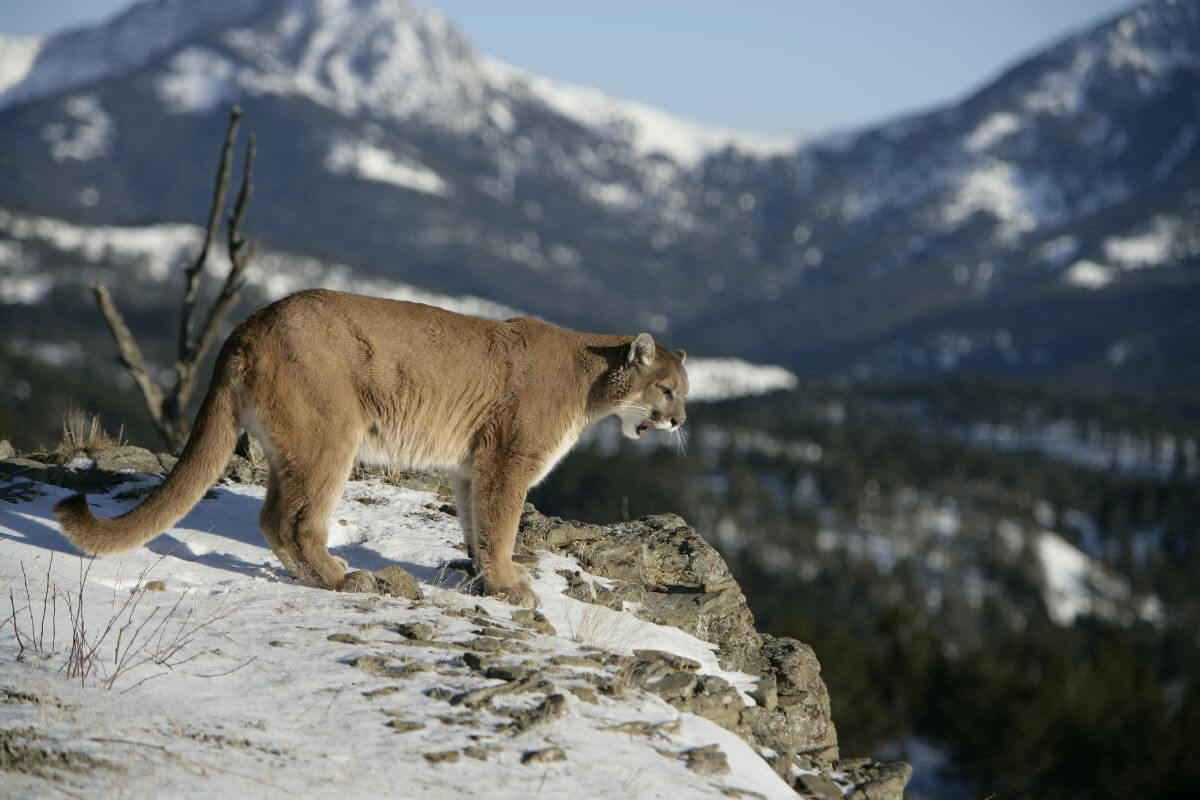
Montana’s mountain lions, known as cougars or pumas, secretly rule the state’s rugged terrains. These solitary and stealthy predators are crucial in the state’s ecosystem as top-level carnivores.
Let’s dive into what makes these creatures so fascinating and how they thrive in Montana’s diverse landscapes.
Montana Mountain Lion History
| Year | Event |
|---|---|
| 1879 | Montana offered bounties on mountain lions, marking them as predators to be eliminated. |
| 1903 -1963 | Over 6 decades, hunters report killing at least 1,897 mountain lions to claim bounties. |
| 1963 | Montana drops bounties on mountain lions and reclassifies them as predators. |
| 1971 | Mountain lions are reclassified as game species, with regulated hunting seasons and limits. |
| Early 1900s | Nationwide predator eradication campaigns threaten mountain lion populations, including within national parks. |
| Early 1980s | Mountain lions begin a noticeable comeback in Yellowstone, possibly due to survivors from central Idaho finding their way back. |
| Present | Montana Fish, Wildlife, and Parks (FWP) thoroughly monitors specific ecoregions and estimates approximately 2,500 independent-aged mountain lions. |
The history of mountain lions in Montana tells a story of survival against all odds. In 1879, the state put a price on their heads, marking them as bountied predators.
In the early 1900s, nationwide campaigns to rid the land of predators like wolves and mountain lions reached even into national parks. This saw Yellowstone’s cougar population nearly wiped out. Yet, the mountain lion endured, thanks to its elusive nature and a preference for hard-to-reach, rocky habitats.
For over 6 decades, from 1903 to 1963, hunters reported killing at least 1,897 lions to claim their bounty. But in 1963, the narrative changed. Montana dropped the bounty on mountain lions, simply calling them a predator.
As the years passed, the mountain lion faced new challenges. By 1971, their dwindling numbers forced a change in classification for mountain lions. Now considered a game species with set hunting seasons and limits, their populations started to recover.
In the early 1980s, the mountain lion made a noticeable comeback in Yellowstone, with some speculating that survivors from central Idaho found their way back.
Today, mountain lions survive and thrive in Montana despite disease, starvation, competition, and hunting challenges. They’ve reclaimed their territory across the state and are helping boost populations in other states.
The Mountain Lion’s success story is not just about the animals themselves, it’s also about Montana’s commitment to conservation and research. By protecting mountain lion habitats and investing in wildlife management based on solid science, the state has set an example for preserving natural heritage.
However, the battle is far from over. The ongoing threats of habitat loss and fragmentation remind us that continued vigilance and action are needed to secure the future of mountain lions in Montana and beyond.
Montana FWP conducts thorough monitoring in specific ecoregions to monitor their populations. In these areas alone, there are an estimated 2,500 independent-aged mountain lions. These efforts and the state’s conservation practices are key to ensuring the mountain lion’s place in Montana’s wild heart.
Montana Mountain Lion Characteristics
| Characteristic | Description |
|---|---|
| Scientific Name | Puma concolor |
| Other Names | Catamount, Cougar, Panther, Puma, Mountain Screamer |
| Physical Description | The mountain lion is a large cat with a long body, powerful limbs, and a distinctive small head and long, black-tipped tail. |
| Color Phases | The mountain lions’ color varies from buff and cinnamon to silvery gray and bluish. |
| Length | Adult male mountain lions range from 171 to 274 cm long, while females are 150 to 233 cm long. |
| Weight | Adult male mountain lions weigh 150 to 190 lbs, while females weigh 70 to 120 lbs. |
The Montana Mountain Lion stands out as the largest feline in North America. This stealthy predator roams a variety of habitats, preferring wooded areas that offer cover for hunting.
Despite their size and strength, mountain lions are elusive and usually keep to themselves. The exception is during mating seasons and when females and raise their cubs.
Regarding their lifestyle, mountain lions have one of the largest home ranges among Western Hemisphere mammals. These ranges serve as hunting grounds, resting spots, and safe areas for raising their young.
Mountain Lion diet mainly consists of Deer, Elk, and Porcupine, making them a significant part of Montana’s ecosystem as they help control the populations of these animals.
Interesting facts about Montana Mountain Lions include but are not limited to:
- Adult male mountain lions are territorial and may fight to defend their territory.
- Despite being solitary most of the time, mountain lions may share territory with multiple females.
- Mountain lions have a unique way of eating and storing food, which involves caching their prey for later meals.
- Mountain lions’ hunting skills are adapted to various prey, from small animals like red squirrels to large ungulates like moose.
- Mountain lion breeding and birthing can occur at any time of the year, but most populations have peak seasons.
Human encounters with mountain lions are rare, as they actively avoid us and primarily hunt wild animals. However, conflicts can arise where their habitat overlaps with human environments, especially regarding farm animals. Understanding and respecting the nature of these elusive mountain lions is key to peaceful coexistence.
Montana Mountain Lion Identification

The Montana Mountain Lion Identification Program is a special training program that anyone interested in mountain lions can join. It’s all about learning the lion ecology and, for those who hunt, making sure they know the laws and how to tell a male from a female.
Here’s what the Montana Mountain Lion Identification Program covers:
- Mountain Lion Biology – You’ll dive deep into what makes these big cats tick.
- Gender Determination – Learn to tell whether a mountain lion is male or female.
- Laws and Regulations – Understand the do’s and don’ts of mountain lion hunting in Montana.
Why is knowing the gender of mountain lions important? For starters, it helps protect the female lions and their cubs. When hunters, guides, and houndsmen can tell the gender of mountain lions before they hunt, it leads to:
- Female Lion Safety – We keep the mountain lion population strong by not hunting females.
- Safety for Cubs – A hunted female means no mom for the cubs, leading to lion cub mortality associated with orphaning. Knowing the gender helps prevent this.
- Happy Hunting – Hunters who meet their objectives and help with conservation feel a deeper satisfaction.
- Accomplishment of State Management Goals – Gender identification of mountain lions helps meet the state’s management goals to keep the population healthy.
To spot difference between male and female adult and subadult mountain lions, check out this guide:
| Characteristic | Male Lion | Female Lion |
|---|---|---|
| Black Spot | Male lions have a conspicuous black spot around the penis sheath, about 1 inch in diameter. | Female lions may have black fur surrounding the vulva. |
| Black Spot and Base of Tail Distance | For male lions, the distance from the black spot to the base of the tail is more than 4 inches. | For female lions, the distance from the black spot to the base of the tail is 3 inches or less. |
When it comes to telling apart other big cats from mountain lions, here are the key points to remember:
- Size – Mountain lions are way bigger than Jaguarundis, with much longer bodies.
- Tail Length – Mountain lion tails are significantly longer than Canada Lynx and Bobcats. There are also black markings on the tips of lynx and bobcat tails.
- Spotting – Unlike some cats, adult mountain lions don’t have spots in their fur. Young mountain lions differ from the Ocelot in that their spots are not arranged in rows or chain-like streaks.
- Foot Size – Mountain lions have feet more like a lynx than a bobcat, which has much smaller feet.
Knowing these details can help hunters and enthusiasts avoid mistaking one animal for another. It’s all about keeping the balance in nature and appreciating these creatures from a safe and knowledgeable distance.
Montana Mountain Lion Hunting

With its diverse terrain and well-regulated hunting regulations, Montana has become a prime destination for those seeking the thrill hunting of mountain lions. This section will explore its various aspects, including licenses and the services offered by various Montana Mountain Lion outfitters.
Montana Mountain Lion Licenses
| Mountain Lion License | Resident Fee | Non-resident Fee | Availability | Deadline |
|---|---|---|---|---|
| General | $19 | $320 | Over the Counter | N/A |
| Limited Special | $19 | $320 | Special Drawing | July 22 |
| Unlimited Special | $19 | $320 | Over the Counter | N/A |
| Hound Training | $5 | N/A | Over the Counter | N/A |
| Non-Resident Hound | N/A | $250 | Over the Counter | N/A |
Getting a license to hunt a mountain lion in Montana is the first step for those willing to take on this challenging adventure. The state offers various licenses, each with its own rules and fees.
Let’s break down the key points about Montana Mountain Lion hunting licenses:
- General Mountain Lion License (without dogs) – The General Mountain Lion License allows hunting in any valid LMU during the archery and fall season without dogs. However, the LMU will close when 20% of the quota is reached. This rule applies to both male and female lion harvests, and the deduction is made from the overall quota. Apprentice hunters are not eligible for this license.
- Limited Special Mountain Lion License – The Limited Special Mountain Lion License is issued through a special drawing. If you’re lucky enough to be selected, you can hunt in the designated LMU for the entire season, regardless of quota limits. Again, not for apprentice hunters.
- Unlimited Special Mountain Lion License – The Unlimited Special Mountain Lion License is valid until the season ends or quotas are filled. You must stick to the specified region but can hunt in any valid LMU during the archery and fall seasons. And yes, it’s not for apprentice hunters.
- Hound Training License – Residents with a valid mountain lion license can use dogs for hound training, except in Hunting District 282, during the hound training season from Dec. 2 to April 14. A separate hound training license is not needed.
- Non-Resident Hound License – The Non-Resident Hound License is limited to a maximum of 80 per year and cannot be used to assist others in hunting. It’s for personal use only.
When hunting, monitoring the current quota, regulations, and updates is crucial. Once specific quotas are met, the hunting season can close within 24 hours’ notice, which is particularly important for hound hunters.
The Montana Fish and Wildlife Commission voted to increase mountain lion hunting quotas significantly in June 2023. This is to reduce the lion population, which helps protect other wildlife. These increases to lion quotas are district-specific and aim to decrease mountain lion numbers by up to 40% over 6 years.
For those interested in hunting mountain lions, it is essential to understand the nuances of the licenses, including the female mountain lion quotas and the hunting season. This ensures compliance with current regulations and a successful, ethical hunt.
Trichinosis in Montana Mountain Lions
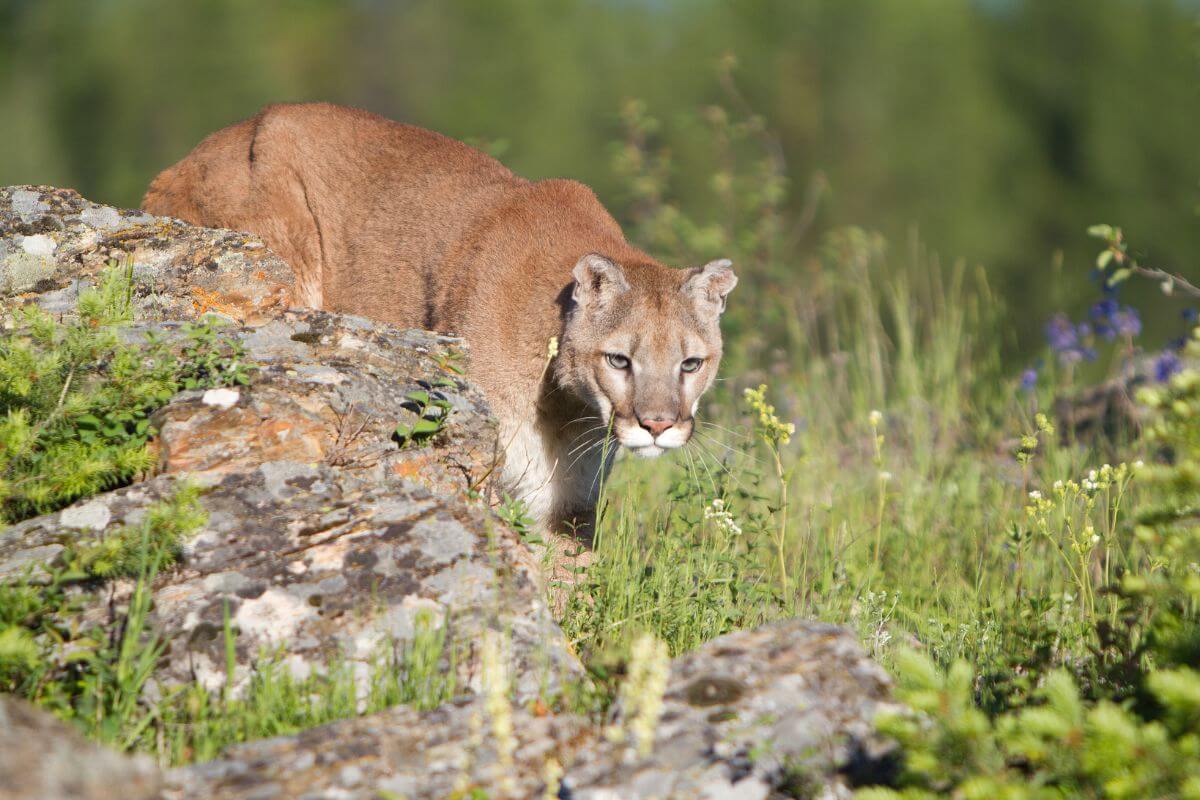
Trichinosis, often known as trichinellosis, is a serious concern for Montana mountain lions. This disease stems from a microscopic parasite called Trichinella. It affects those who consume raw or undercooked meat from infected animals.
Trichinosis is more common in wild carnivorous animals like bears and mountain lions and omnivores like wild boars and domestic pigs. The risks are significant, especially for those who enjoy hunting or handling game meat.
For anyone preparing to dine on lion meat, the Montana Fish, Wildlife & Parks (FWP) strongly advises thorough cooking, both for human meals and pet consumption. This step is crucial to kill parasites and ensure the meat is safe.
Despite this, some hunters might want their lion meat tested for Trichinella. In such cases, sending a tissue sample to the Montana Department of Livestock’s diagnostic lab is an option.
Here are some essential precautions to take when handling game animals, with a focus on mountain lions, to lower the risk of Trichinosis transmission:
- Wear Protective Gloves – Always use rubber (latex) gloves when field dressing game to prevent direct contact with potentially infected tissues.
- Minimize Certain Contacts – Avoid contact with specific parts like the brain, spinal tissues, and animal fluids.
- Clean Up Thoroughly – Carefully wash your hands and all tools after handling the meat.
- Cook Meat Completely – Ensure all meat is cooked through and not consumed rare or undercooked.
- Ensure Dog’s Safety – If you have a pet dog, it’s important to keep it from eating the internal organs of game animals, as this is a common way for parasites to spread.
These steps are about following rules and keeping you and your loved ones safe from a potentially dangerous disease. You can enjoy your hunting bounty without risking your health by properly handling and cooking lion meat.
Montana Mountain Lion Outfitters
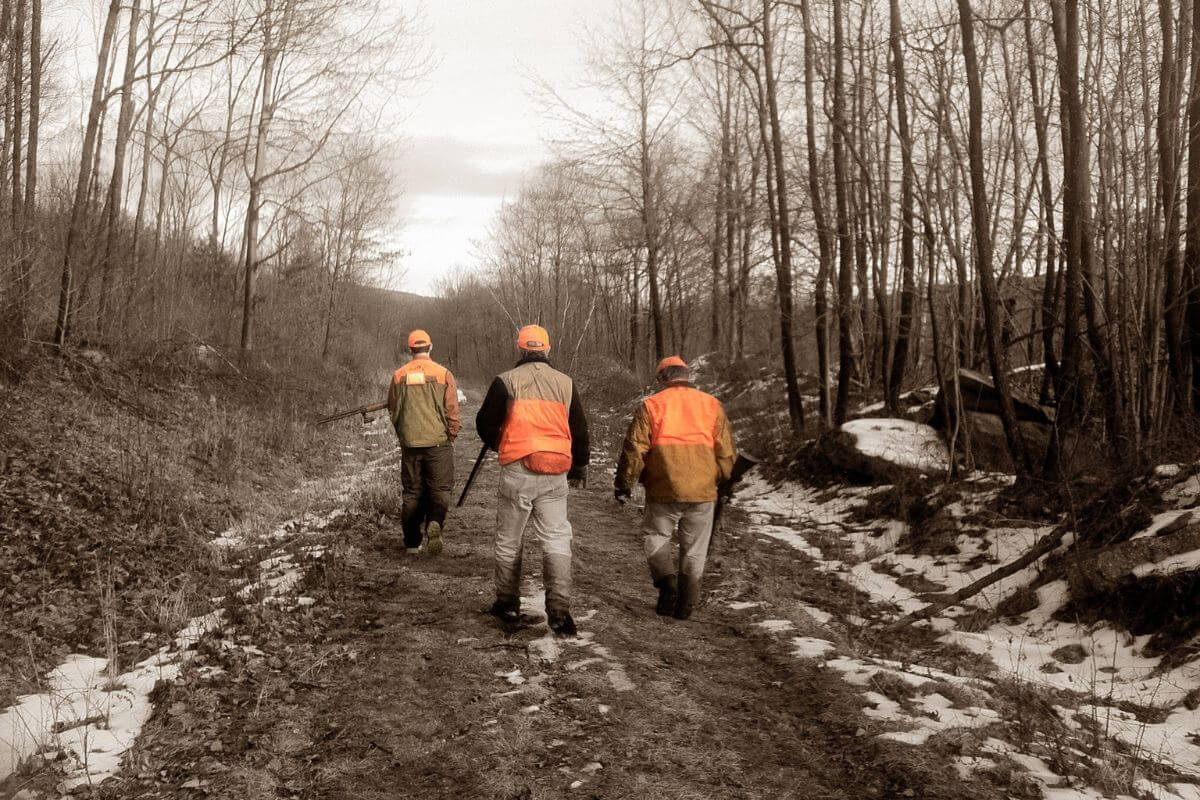
Montana offers some of the best mountain lion outfitters in the business. These outfitters are not just about the hunt, they’re about the experience, passion, and professionalism that goes into each expedition.
Montana mountain lion outfitters include but are not limited to the following:
- Montana Mountain Lion Adventures – Montana Mountain Lion Adventures is about quality over quantity. They limit the number of clients yearly to ensure an unmatched hunting experience. The hunting of lions is more than a job for them. It’s a passion that shines through in their personalized, all-inclusive hunts.
- Swan Mountain Outfitters – What sets Swan Mountain Outfitters apart is their use of experienced houndsmen and dogs to track and tree the cats. With comfortable December hunt accommodations and great trophy opportunities, this traditional method makes for a unique and successful lion-hunting experience.
- Redbone Outfitting – With a near 100% success rate on lion hunts, Redbone Outfitting is a go-to for serious hunters. They emphasize the use of rifles or handguns, especially open-sight lever guns, for shots that are typically 30 yards or less. Their focus on what works best in lion hunting has yielded exceptional results.
These outfitters are at the forefront of lion hunting in Montana, offering a chance to hunt and immerse yourself in the passion and skill that defines this challenging sport. Whether it’s about the thrill of the chase or the precision of your gear, there’s an outfitter here for every lion hunter.
Where to See Mountain Lions in Montana
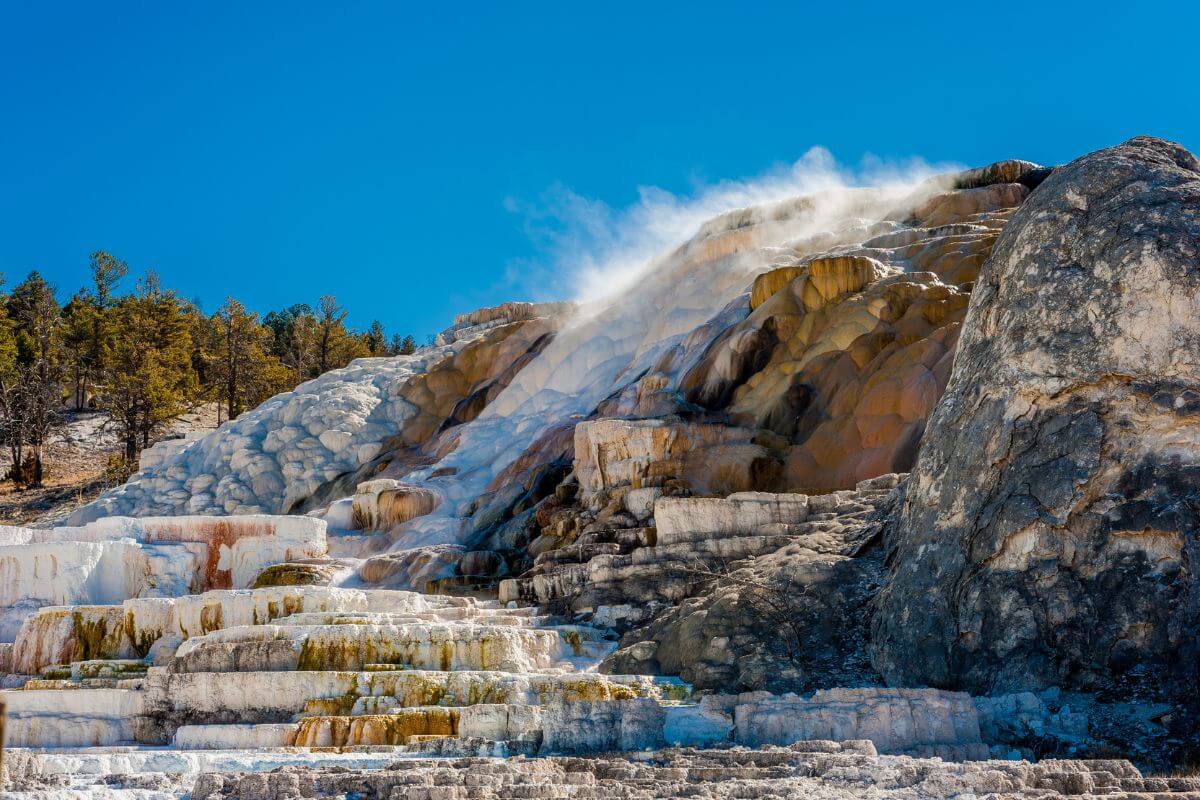
Montana is huge, covering 145,552 square miles (234,243 square km) of land. And guess what? About 51% of this vast state is like a welcoming home for mountain lions. The Montana Fish, Wildlife, and Parks says these big cats have around 74,000 square miles (119,091 square km) to roam. That’s a lot of space!
Most mountain lions hang out in the western and central parts of Montana. But get this: They’re also starting to appear in the east. They’re saying, “Hello, we’re back,” to areas where they used to live.
If you’re considering where to spot a mountain lion in Montana, the famous Glacier and Yellowstone National Parks are your best bet. Let’s take a closer look at each park:
- Glacier National Park – The lions are there in Glacier Park, but they’re like hidden experts. They maintain stable populations and have a menu that includes deer, elk, moose, and more. They’re most active at night or during the early and late hours of the day. When they make a big catch, they stash it away to eat for a few days.
- Yellowstone National Park – Yellowstone is another place where these stealthy cats live. About 34–42 of them are in the northern part of the park. They’re rarely seen because they’re good at staying out of sight. They’re the top predators here, feasting on a variety of animals.
Seeing a mountain lion in the wild is a rare and special event. These cats usually avoid humans. So, if you see one, it’s best to enjoy the moment quietly from a safe distance. Human-mountain lion encounters are kept to a minimum because these beautiful creatures like to keep to themselves.
Tips for Watching Mountain Lions in Montana
Watching a mountain lion in Montana’s wild landscape can be a breathtaking experience. It’s like getting a front-row seat to nature’s majesty. But it’s important to remember that these are wild animals, and you must be cautious, especially if you have kids.
Some essential tips for safely observing mountain lions in Montana include:
- Avoid Solo Hikes – Exploring with a buddy or a group is safer.
- Make Some Noise – This lets the lions know you’re around, allowing them to slip away quietly. Also, keep your little ones close.
- Stay Calm – If you encounter a lion, don’t run. Speak in soothing tones, back away slowly, and keep eye contact. This shows the lion you’re not a threat and gives it a way out.
- Stand Your Ground and Fight Back – If it looks like an attack will happen, you need to stand your ground, unlike with bears. Act big, shout, and be ready to defend yourself. Throwing rocks or sticks, hitting, or kicking the lion is okay if it attacks.
Mountain lions are most active at night, but they’ve been known to roam during the day, too. They don’t usually see humans as food, but they have attacked in the past, especially children and small adults. If a lion does attack, fight back with everything you’ve got.
Remember, these tips are all about being cautious and respectful. They’re meant to help you enjoy nature’s wonders from a safe distance.
Montana Mountain Lion Final Thoughts
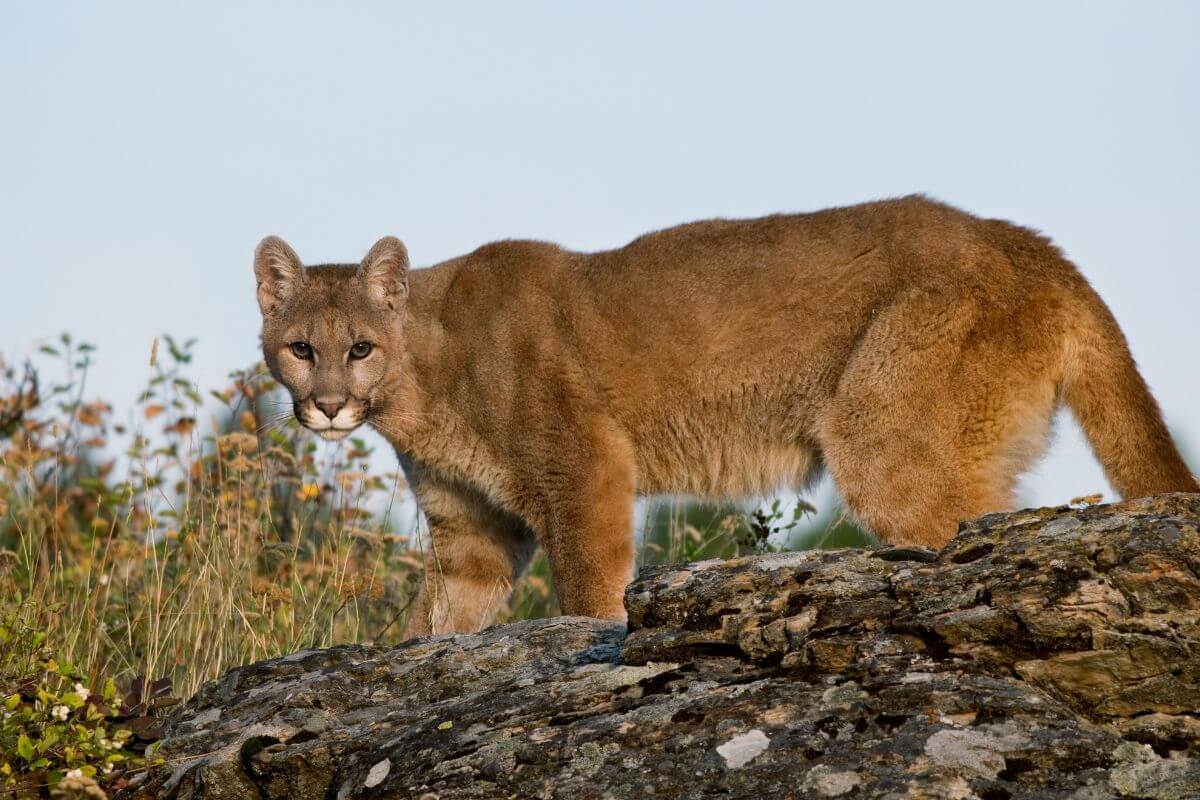
The story of Montana’s mountain lions is one of resilience and adaptation. Once targeted for elimination, these majestic creatures have survived and thrived thanks to the state’s commitment to conservation and research. Their comeback is a testament to the importance of protecting natural habitats and the role of science in wildlife management.
As Montana continues to monitor and protect its mountain lion population, it also faces challenges like habitat loss and disease. The lessons learned from the history and characteristics of these stealthy predators are vital for ensuring their future and the balance of Montana’s ecosystem.
Whether through responsible hunting practices or understanding the risks of diseases like trichinosis, every interaction with mountain lions contributes to their ongoing success story in the Treasure State.
Montana Mountain Lion Guide FAQs
1. Are There Mountain Lions in Montana?
Mountain lions, also known as cougars or pumas, are found in Montana. They inhabit habitats ranging from dense forests to rugged mountains and grassy plains.
Mountain lions are solitary and elusive animals, making them difficult to spot in the wild. However, they play an important role in Montana’s ecosystems as top predators, helping regulate prey populations and contributing to overall ecosystem health.
2. How Many Cougars Live in Montana?
Estimating the exact number of cougars in Montana is challenging due to their elusive nature and wide-ranging behavior. However, the Montana Fish, Wildlife & Parks (FWP) agency conducts research and monitoring efforts to track cougar populations within the state. According to Montana FWP estimates of lion numbers, several thousand are believed to be in Montana.
3. How Much Is a Montana Mountain Lion Tag?
A mountain lion tag costs $19 for residents and $320 for nonresidents in Montana. This tag allows hunters to pursue mountain lions in designated hunting areas within the state, subject to regulations and an annual hunting quota set by the Montana Fish, Wildlife & Parks Department.
4. How Big Do Mountain Lions Get in Montana?
Mountain lions can vary in size, with individuals in Montana typically weighing between 90 to 180 pounds (41 to 82 kilograms). However, some exceptionally large males have been recorded weighing up to 220 pounds (100 kilograms) or more.
5. Are There Big Cats in Montana?
There are big cats in Montana, primarily referring to mountain lions. Mountain lions are the largest wild cats in Montana and can be found throughout the state.
Immerse yourself in the spirit of Montana by exploring these articles:
- Learn About the Montana Mountain Horse
- Guide to Montana’s Mountain Goat
- Discover Osprey in Montana
- Montana Otters Guide
- https://www.nps.gov/glac/planyourvisit/mtnlionsafety.htm
- https://fwp.mt.gov/hunt/regulations/mountain-lion
- https://fwp.mt.gov/hunt/education/mountain-lion-identification
- https://www.nps.gov/glac/learn/nature/mammals.htm
- https://fwp.mt.gov/conservation/wildlife-management/mountain-lion
- https://www.nps.gov/yell/learn/nature/cougar.htm
- https://fieldguide.mt.gov/speciesDetail.aspx?elcode=AMAJH04010

